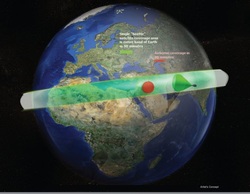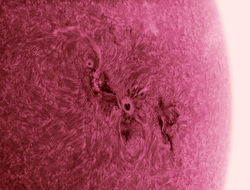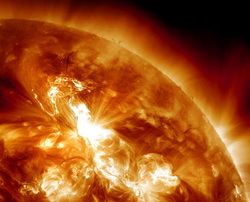|
PopSci Q&A: The Quest for a Male Contraceptive By Jennifer Abbasi Posted 03.28.2012 at 10:13 am  Contraceptive Daniel Schumpert John Amory, a doctor at the University of Washington, has been developing a male contraceptive for 15 years. Turns out, it's harder than it sounds. We spoke with him to find out why. PopSci: Why is it taking so long to produce a birth-control pill for men? John Amory: Women make one egg a month, but men make 1,000 sperm every second of every day, from puberty until the day they die. Turning that off is difficult. PS: How does hormone contraception work? JA: If you give a man enough testosterone, the brain will shut down the secretion of gonadotropins, which are the hormones that signal the testes to make sperm. This is why most bodybuilders are infertile, by the way. But it doesn’t work in all men. PS: How many men does testosterone work for? JA: We have never been able to get more than 95 percent effectiveness. It’s possible to identify who testosterone won’t work for, but it involves getting a lot of sperm counts. It would be much nicer if you could just say, “Take this and it will work.” Women don’t have to undergo ovulation detections and testing to see if the Pill is going to work for them. PS: The World Health Organization funded a study across eight countries for hormone-based contraception, but last year, it shut down the study early. What happened? JA: There were side effects, including severe depression. Some men don’t take hormonal shifts very well. PS: What other approaches might work? JA: Sperm have a pretty daunting mission. There’s a lot that can go wrong. Researchers have injected monkeys with eppin, a protein that coats sperm so they can’t swim. There’s also the process by which sperm make energy. If you can block that, you’d get tired sperm. Also, the testes need vitamin A to produce sperm, and there’s an enzyme that converts vitamin A to its active metabolite, retinoic acid. No retinoic acid, no sperm. I’m developing drug inhibitors that stop retinoic-acid production in the testes. I’m hopeful that we’ll have something approved in five years. PS: Do you expect much demand for the male pill? JA: Yes. Men are interested in having sex. Most of the time they’re not as interested in fathering a pregnancy.
1 Comment
DARPA Wants Swarms of Cheap, Disposable Satellites That Take Pictures on Demand By Rebecca Boyle Posted 03.13.2012 at 3:28 pm  SeeMe Satellites The SeeMe program would give warfighters the ability to receive timely imagery of their specific overseas location directly from a small satellite, all at the press of a button. DARPA Warfighters have plenty of eyes in the sky, with a massive drone fleet and a satellite network that can spot their locations on the ground. But satellites are only helpful when they’re overhead, and battlefield situations can’t wait for orbital physics. To solve this problem, DARPA wants a swarm of cheap satellites nestled between the big ones up above and the aerial drones down below. The satellite swarm would be positioned in tactical orbits and able to send a space-based image back to any individual who wants a picture. The SeeMe program (Space Enabled Effects for Military Engagements, hooray for meaningful acronyms) would use a smartphone or tablet to send a command, according to DARPA. A soldier or marine would press “see me” on a handheld device, and a satellite above would find the person and send back an image within an hour and a half. DARPA is seeking proposals for these satellites from the mobile phone, optics and racecar industries, which could have some ideas about low-cost manufacturing, imaging and propulsion. The SeeMe fleet would consist of a couple dozen satellites, costing no more than $500,000 apiece, according to Dave Barnhart, DARPA program manager. They would have to sweep around the Earth in a specific pattern to provide planetary coverage, and would be situated at low orbital altitudes. They would last just two or three months before re-entering the atmosphere and burning up. Conveniently, there’s another DARPA rapid-launch satellite system, the Airborne Launch Assist Space Access (ALASA) program, which aims to launch lightweight satellites from aircraft into any required orbit. The SeeMe swarm could take advantage of this new system. “SeeMe is a logical adjunct to UAV technology, which will continue to provide local or regional very high-resolution coverage, but which can’t cover extended areas without frequent refueling,” Barnhart said.  _ Angry Sun Erupting Image Credit & Copyright: Alan Friedman (Averted Imagination) Explanation: It's one of the baddest sunspot regions in years. Active Region 1429 may not only look, to some, like an angry bird -- it has thrown off some of the most powerful flares and coronal mass ejections of the current solar cycle. The extended plumes from these explosions have even rained particles on the Earth's magnetosphere that have resulted in colorful auroras. Pictured above, AR 1429 was captured in great detail in the Sun's chromosphere three days ago by isolating a color of light emitted primarily by hydrogen. The resulting image is shown in inverted false color with dark regions being the brightest and hottest. Giant magnetically-channeled tubes of hot gas, some longer than the Earth, are known as spicules and can be seen carpeting the chromosphere. The light tendril just above AR 1429 is a cool filament hovering just over the active sunspot region. As solar maximum nears in the next few years, the increasingly wound and twisted magnetic field of the Sun may create even more furious active regions that chirp even more energetic puffs of solar plasma into our Solar System. This is your new blog post. Click here and start typing, or drag in elements from the top bar.
Solar Flare Big Enough To Cause Catastrophe On Earth Called Surprisingly Likely An aurora borealis may be beautiful, but can there be too much of a good thing? A new study published in the journal Space Weather analyzed the frequency of the solar storms that cause auroras and found that there's a one in eight chance that by 2020 the Earth will be affected by a major solar flare. The risk is far greater than previously thought. "Even if it’s off by a factor of two, that’s a much larger number than I thought,” study author Pete Riley, senior scientist at Predictive Science, a space "weather" research firm in San Diego, told Wired. Why should a storm on the sun be cause for concern? As it turns out, the high-energy particles liberated by a major flare might cause "disruption of the transportation, communication, banking and finance systems, and government services; the breakdown of the distribution of potable water owing to pump failure, and the loss of perishable foods and medications because of lack of refrigeration,” according to a National Resource Council report from 2008. Riley calculated the relationship between the severity of a solar storm and how likely it is to happen, basing his predictions on the so-called Carrington event of 1859, which caused widespread disruption of communication systems as well as brilliant auroras as far south as the Caribbean. During the event, Scientific American noted, "People could read the newspaper by their crimson and green light. Gold miners in the Rocky Mountains woke up and ate breakfast at 1 a.m., thinking the sun had risen on a cloudy day." Some say that a modern-day Carrington might prove to be a "cosmic Katrina." But Wired reports that preparation may be the key to maintaining order in such a situation: "The potential dangers might be significantly less, since power companies are aware of such problems and can take action to mitigate them." |
PTAH
GOT ISHD ON BY WHAT I CREATED AND REPRESENTED THAT IZ EVERYBODY .NOW I KNOW THAT EVEREYBODY TRULY AIN'T GOING,(MAYBE EYE MIGHT SEE WHAT THE END GONE BE).KNOW MATTER HOW THEY DO YOU JUST KNOW THAT SOME PEOPLE ARE STILL HUSTLIN BACKWARDS Archives
October 2012
Categories |
|
|
- KAM
- don't jump into the pacific ocean or evacuate earth 'yeah nothing like that"
- sum moore
- Now it'z Our TIME
- The 1
- multipolar harmonicz
- laptop gate
- zaporozhye nuclear power plant news
- fukushima
- fallout/ radiation
- BOARDER BLOG
- terrorist state
- food now
- Climate change we must Change
- FOCUS FILMZ POLITICAL
- IZM GALLERY
- IZM TV/NEWS
- YOU KNOW WHO IT IZ
- ON YOUR BACK & BEYOND STYLE
- izm party
- Global biz
- ASCENDING MASTERS
- WHAT'Z UP WITH IT
- WORLD WIDE PEACE AND LOVE OR WAR
- JOURNEY OF PTAH
- INNOVATION
- tech/ cyber.S
- colonial semi yuanizm
- WHAT IZMIST DO
- GOLDEN AGE
- focus filmz
- cosmic alignment 2012
- THE PEACE AND LOVE FOUNDATION INC
- PROBLEMS IN LIES THE SOLUTION
- planet DISNEY
- melting pot
- fallout/radiation videos and info
- planet Elizabeth Taylor
- FOCUS FILMZ POLITICAL ON LOCATION
- we R the children
- books of knowledge
- Nu age
- TRUTHIZM" they will watch you die"
- CHEIF
- source of allmediaizm
- ptah messages from the beyond"
- COVID/19
- HEMP & CANOPY NEWZ
- CHINA BLUEIZM
- 4LIGHT IZ ZOUND


 RSS Feed
RSS Feed
